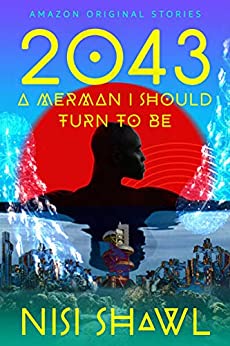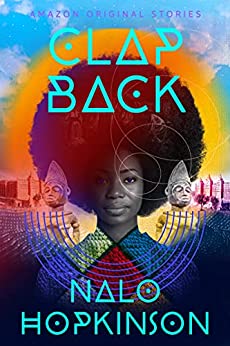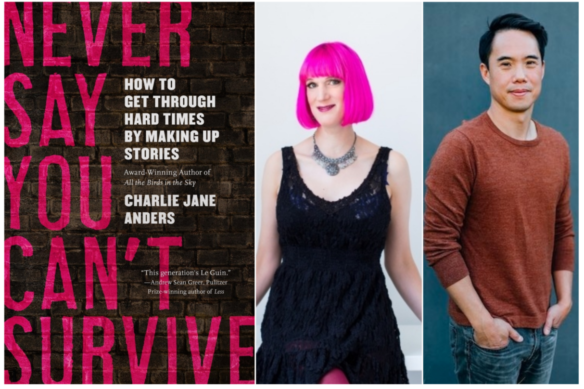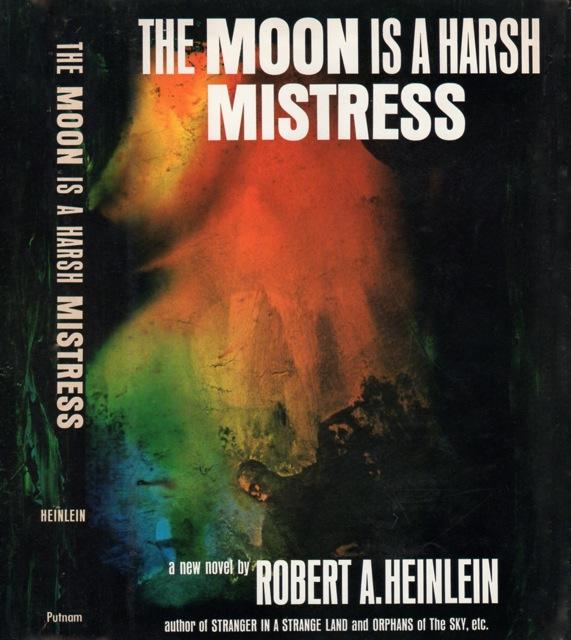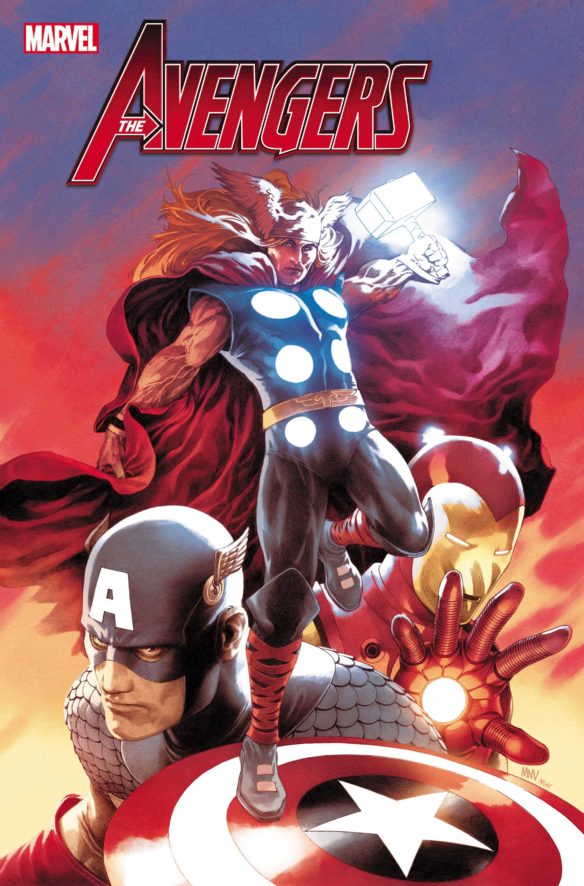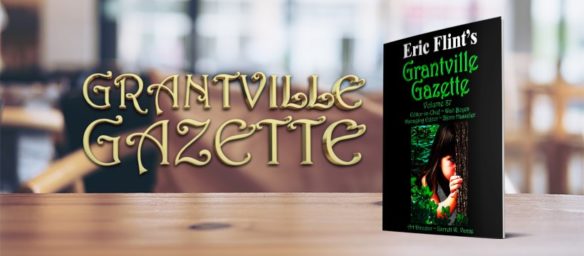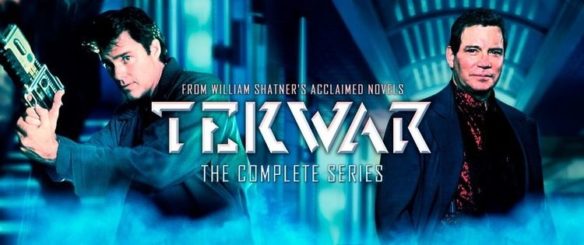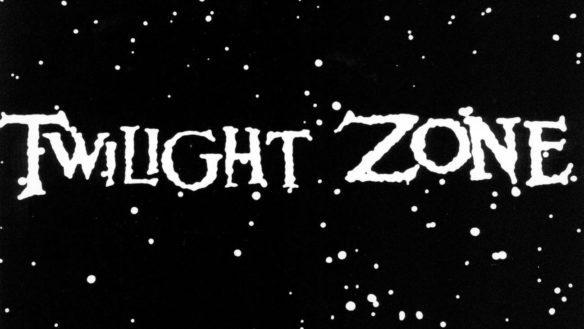(1) CHARLES YU Q&A. “’In Any Version of Reality’: Talking SF with Charles Yu” at Public Books.
Christopher T. Fan (CF): In a later chapter of How to Live Safely, there’s another father-son scene, where the father is trying to impart knowledge to the young protagonist. He’s opening a pack of graph paper, peeling off the cellophane—it’s very tactile. He says, “Choose a world, any world,” as he opens up this graph paper and presents it to his son. Can you say more about that sense of optimism? How graph paper leads to a world?
Charles Yu (CY): In my dad’s office, he had these thick pads of graph paper with this very pleasing feel. They were pretty squishy because the paper was thick, and they had these very light green lines. It wasn’t perforation, it was like they were wax. You just tore a page off, and there was a sound that the pad would make as you tore off a nice sheet. I usually wouldn’t tear off the page I was working on, because you’d want the feeling of all the sheets underneath the top one. I was just playing with the idea.
No matter what else is going on, no matter if you’re an immigrant making your life in a foreign country, or if you’ve got all this work pressure and money pressure, or you’re trying to refinance the house because you’re maxed out on all your credit cards—whatever is going on in your life at that moment, you think, OK, we have math, we have a universe. I draw the X axis, I draw the Y. We’re in the Cartesian plane—here we are. To be able to go to that plane, anytime, just like that.
(2) NBA FINALISTS. The 2022 National Book Awards finalists were announced October 4 by the National Book Foundation. There are two works of genre interest. The complete list of finalists is here.
National Book Award 2022 Finalists: Translated Literature
Scattered All Over the Earth by Yoko Tawada
Original Language: Japanese/ Translator: Margaret Mitsutani (Penguin Random House / Riverhead Books)
National Book Award 2022 Finalists: Young People’s Literature
The Ogress and the Orphans by Kelly Barnhill(Workman Publishing / Algonquin Young Readers)
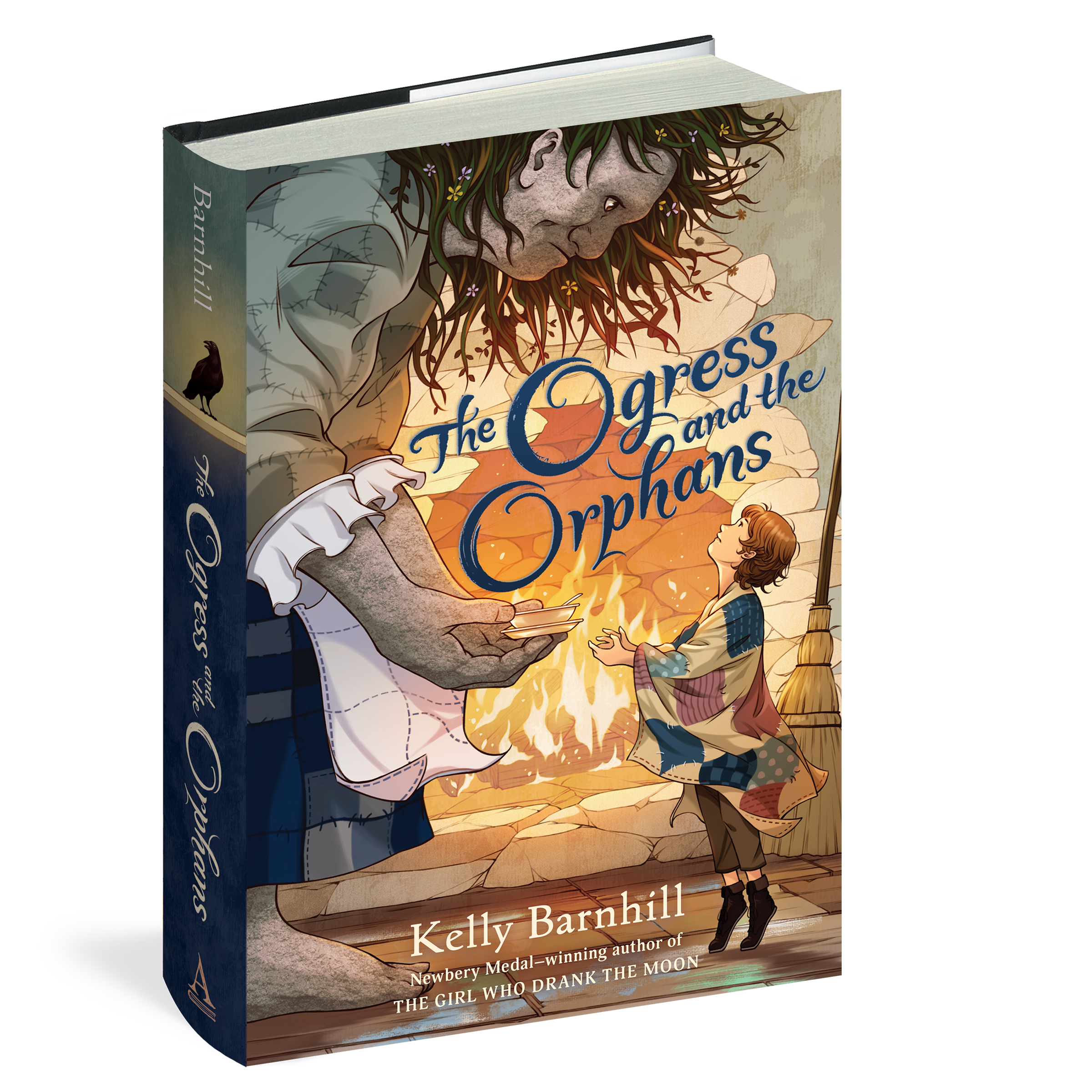

(3) WIKI BARS THE DOOR. [Item by Paul Weimer.] Author Gwenda Bond has been denied a Wikipedia for extremely sketchy reasons. Thread starts here.
(4) THE TANK HAS BEEN REFILLED! Chris Garcia just released his Drink Tank Chicon 8 / Chicago issue — The Drink Tank 441 – Chicon! It’s 84 pages of words and pictures from Alissa McKersie, Chuck Serface, and Chris Garcia, joined by Dave O’Neill, Paul Weimer, Fred Moulton, Vanessa Applegate, Juan Sanmiguel, Phoenix Data Art, Bill Rowe, Thad Gann, Ron Oakes, Steven H Silver, Espana Sheriff, DALL*E 2, Midjourney, and WOMBO Dream.
The Drink Tank’s “Crime Fiction – 1950 to 2000” issue should be out in a week or so, but there’s still time to submit for the up-coming looks at “Welcome to Nightvale” (Deadline Dec. 1) and the “Grant Morrison” issue (November 1).

(5) SKELETOR’S RECRUITING OFFICE. Cora Buhlert has a new photo story — “Masters-of-the-Universe-Piece Theatre: ‘Help’”
… “Ahem and why are we capturing Man-at-Arms, boss?”
“So he can build machines and weapons for us, Trap Jaw. And tell me all about the secrets of Castle Grayskull and how to kill He-Man, while he’s at it.”
“Uhm, I’m pretty sure Tri-Klops won’t like that, boss. After all, he is our tech guy.”
“I don’t care what Tri-Klops thinks. If he doesn’t want to be replaced, maybe he should come up with inventions that actually work.”…
(6) MY LITTLE PONYTAIL. GQ inquires “How Did This Ponytail Become the Go-To Men’s Hairstyle in Fantasy Adaptations?”
…The show, a Game of Thrones prequel, takes place 200 years before the events of the original series and focuses on the wheelings and dealings of the Targaryen dynasty. This means that while there was one recurring platinum blonde Targaryen wig on Game of Thrones, pretty much everyone on House of the Dragon gets to rock one—and, along with it, the half-ponytail. (It’s so excessive that Vulture published an entire House of the Dragon half-ponytail ranking.) By the time I saw Matt Smith stride onto screen as the bad boy prince Daemon Targaryen—complete with a fancy little half-ponytail he apparently meticulously styles in between waging wars, riding his dragon, and macking on his niece—I realized that the look was far bigger than Westeros. It’s become the go-to hairstyle to telegraph: “This guy’s in a fantasy series.”
So where did its reign start? The ur-fantasy-half-ponytail, down to the blonde dye job, seems to belong to Legolas in the early aughts Peter Jackson Lord of the Rings movies. J.R.R. Tolkien’s Elven prince had previously been depicted on paperback covers or in the 1978 animated Ralph Bakshi adaptation with more of a cocaine chic shag situation going on. But in the Jackson films, Orlando Bloom emerges with long silky blonde locks, tied back in a half-pony. (Where were you when, in 2001, you discovered what Bloom’s actual hair looked like?) Every prominent modern half-ponytail in fantasy—Henry Cavill in The Witcher, Daemon in House of the Dragon—owes a debt to this one.
Curious about how it originally came to be, I called up the Academy Award-winning hair designer for the Lord of the Rings trilogy, Peter Swords King (yes, really). He told me that he didn’t consult any previous aesthetics when developing the hair for Legolas. “We spent weeks experimenting with different things and came up with that. Then Peter Jackson said, ‘Oh, I really like that. That looks great,’” King recalled. “Legolas had two fishtailed braids on the other side of his head and that kept it back off his face. And then there was a tiny bit at the top by the back that was pulled into a ponytail.” (“Elves cannot have messy hair,” King added. “Lots of other characters can, it’s fine. But elves can’t. It’s not elvish to be messy.”)
King also worked on Jackson’s three-part adaptation of The Hobbit and pointed out that he gave a more rugged version of the style to Luke Evans when he played Bard the Bowman. “He was going to have all his hair down at one point and I went, ‘No, no I’m going to just try it half up, half down once,’” he said. “And I did that and said, ‘That’s it. That’s perfect. We want to see that hair moving when he runs and fights, but we don’t want it in his face.’” The issue with the hair all down was that “as soon as he started fighting, even with product in it and everything, it kept getting in his face. It looked bad. He looked messy.”
(7) MIYAZAKI ON STAGE. [Item by Martin Morse Wooster.] In the Financial Times behind a paywall, Sarah Hemming interviews My Neighbour Totoro, based on the film by Hayao Miyazaki, written by Tom Morton-Smith and with music by Joe Hisaishi (who also did the music for the film). It is playing at the Barbican Theatre (barbican.org.uk) through January 21.
Morton-Smith “describes his task as ‘translation as well as adaptation’ He’s expanded several scenes, brought forward some characters and increased the dialogue. But he adds that, although the story doesn’t confirm to convention expectations, it does have defined sections and a narrative journey…
Finding a stage language for this delicate story has meant drawing together a high-powered international team. Hisaishi has been closely involved and his original score will be played live. Jim Henson’s Creature Shop is building the puppets, designed by Basil Twist, and Phelim McDermott, expert in improvisation and puckish invention is directing. The show is produced in collaboration with English theatre company Improbable and Japan’s Nippon TV.
(8) ALBERT COWDREY (1933-2022). Author Albert Cowdrey died August 21 at age 88. According to the family obituary, “He wrote Elixir of Life, a historical novel, Crux, a science fiction novel, and more than sixty published short stories, many in The Magazine of Fantasy & Science Fiction. He was the only writer to receive awards from both the American Historical Association (Herbert Feis Award, 1984) and the World Fantasy Convention (World Fantasy Award, 2002).” The WFA was for his short story “Queen for a Day”.
(9) MEMORY LANE.
1923 – [By Cat Eldridge.] Ninety-nine years ago this month in Black Mask’s October 1923 issue, Dashiell Hammett’s Continental Op private detective first appeared. He’s employed as an operative of the Continental Detective Agency’s San Francisco office, hence his nickname. The stories are all told in the first person and his actual name is never given.
He may be the earliest hardboiled detective to appear in the pulp magazines. Note I said maybe. It’s still in matter of debate among pulp magazine historians.
He appeared in thirty-six short stories, all but two of which appeared in Black Mask. Some ofHammett’s short stories in Black Mask were intended to be the basis for his novels, so for example “Black Lives”, “Hollow Temple”, “Black Honeymoon” and “Black Riddle” would become The Dain Curse. The novels differ substantially from the stories as they were revised by an editor at Alfred A. Knopf.
There are but two novels in the series, The Dain Curse and Red Harvest. The latter was originally called The Cleansing of Poisonville and it sums up the novel damn well. Red Harvest, like The Dain Curse, started life as linked stories in Black Mask.
The Library of America’s Complete Novels includes both Red Harvest and The Dain Curse as printed by Knopf. The companion collection Crime Stories and Other Writings uses the original pulp magazine texts.
Of course there have been video adaptations.
The Dain Curse was made into a six-hour CBS television miniseries in 1978 starring James Coburn. Here The Op was named Hamilton Nash which was his creator’s name ‘spelled sideways’.
Four years later, Peter Boyle played the Continental Op in the opening of Hammett in which Hammett as played by Frederic Forrest is writing a story about the detective character.
And finally thirteen years later, Christopher Lloyd played The Continental Op in “Fly Paper” in season two, episode seven of the Fallen Angels anthology series adapted from Hammett’s short story of the same name.
Blackstone has done a most exemplary audio productions of the novels which I know are on Audible and probably everywhere else as well.

(10) TODAY’S BIRTHDAYS.
[Compiled by Cat Eldridge and JJ.]
- Born October 5, 1905 — John Hoyt. His first genre role was in When Worlds Collide as Sydney Stanton, and the next in Attack of the Puppet People as Mr. Franz, bookending the Fifties. He starts off the Sixties in The Time Travelers as Varno. He appeared twice during the second season of The Twilight Zone in the episodes “Will the Real Martian Please Stand Up?” and “The Lateness of the Hour”. And he had roles in many other genre series, including as the KAOS agent Conrad Bunny in the Get Smart episode “Our Man in Toyland”, and General Beeker in Voyage to the Bottom of the Sea’s episode “Hail to the Chief”, and Dr. Philip Boyce in the original pilot episode of Star Trek (“The Cage”). In the Seventies he appeared in Flesh Gordon as Professor Gordon. Yes, Flesh Gordon. (Died 1991.)
- Born October 5, 1919 — Donald Pleasence. He was Doctor Samuel Loomis in the Halloween franchise and the President in Escape from New York. He also had a plethora of parts in other genre properties, a few of which include the main role in the movie Fantastic Voyage which was novelized by Isaac Asimov, roles in episodes of the The Twilight Zone, The Outer Limits, and The Ray Bradbury Theater, a part in George Lucas’ first foray into filmmaking, THX 1138, John Carpenter’s The Prince of Darkness, and the role of Merlin in the TV movie Guinivere. My favorite film title for a work he was in? Frankenstein’s Great Aunt Tillie in which he played the dual roles of Victor Frankenstein and Old Baron Frankenstein. (Died 1995.)
- Born October 5, 1949 — Peter Ackroyd, 73. His best known genre work is likely Hawksmoor which tells the tale of a London architect building a church and a contemporary detective investigating horrific murderers involving that church. Highly recommended. The House of Doctor Dee is genre fiction as is The Limehouse Golem and The Casebook of Victor Frankenstein. I thought Hawksmoor had been turned into a film but it has not. But he has a credit for The Limehouse Golem which is his film work.
- Born October 5, 1952 — Clive Barker, 70. Horror writer, series include the Hellraiser and the Book of Art, which is not to overlook The Abarat Quintet which is quite superb. Though not recent, The Essential Clive Barker: Selected Fiction published some twenty years ago contains more than seventy excerpts from novels and plays and four full-length short stories. His Imaginer series collects his decidedly strange art. There has been a multitude of comic books, both by him and by others based on his his ideas. My personal fave work by him is the Weaveworld novel.
- Born October 5, 1945 — Judith Kerman, 77. Can we call her a polymath? She’s a translator, publisher, academic, anthologist and poet. All of her poetry, collected in Uncommonplaces: Poems of the Fantastic, is well worth your time. She did two non-fiction works of which I’m recommending one, “Retrofitting Blade Runner: Issues in Ridley Scott’s Blade Runner and Phillip K. Dick’s Do Androids Dream of Electric Sheep”, as I’ve a Jones for that literature.
- Born October 5, 1959 — Rich Horton, 63. Editor of three anthology series — Fantasy: Best of The Year and Science Fiction: Best of The Year, merged into The Year’s Best Science Fiction & Fantasy in 2010. He wrote a review column for Locus for twenty years, signing off this past February. His Strange at Ecbatan blog includes reviews, criticism, and a well-received series that proposes Hugo finalists to fill in the old years when only winners were announced, or even before the award was created.
- Born October 5, 1971 — Paul Weimer, 51. Writer, Reviewer, and Podcaster, also known as @PrinceJvstin. An ex-pat New Yorker living in Minnesota, he has been reading science fiction and fantasy for over 30 years and exploring the world of roleplaying games for more than 25 years. A three-time Hugo finalist for Best Fan Writer (2020-2022), he is a prolific reviewer for Nerds of a Feather. He also contributes to the Hugo-nominated fancast The Skiffy and Fanty Show and the SFF Audio podcast. He was the 2017 Down Under Fan Fund delegate to the Australia and New Zealand National Conventions, and his e-book DUFF trip report, consisting of more than 300 pages of travel stories and stunning photographs, is still available here.
- Born October 5, 1975 — Kate Winslet, 47. A longer and deeper genre record than I thought starting with being Prince Sarah in A Kid in King Arthur’s Court before playing Ophelia in Branagh’s Hamlet a few years later. She shows next as Clementine Kruczynski in the superb Eternal Sunshine of the Spotless Mind, and was Sylvia Llewelyn Davies in the equally superb Finding Neverland. She’s Jeanine Matthews in Divergent and Insurgent, and is slated to be Ronal in the forthcoming Avatar 2. She’s the voice of Miss Fillyjonk in the English dub of the Swedish Moominvalley series. Finally, I’d like to note she narrated the audiobook version of Roald Dahl’s Matilda.
(11) LIVE FROM NEW BOOK, IT’S SATURDAY NIGHT! Goodman Games is doing a live interview with Michael Moorcock this weekend: “Live Interview With Michael Moorcock is This Weekend!”
The Sanctum Secorum is pleased to announce a special episode of Sanctum Secorum Live with guest Michael Moorcock. In honor of the forthcoming release of the newest book in the Elric saga, The Citadel of Forgotten Myths, Mr. Moorcock will be talking live about Elric, his new book, and more. Perhaps more importantly, he will also be taking questions from you, our viewers!
The show will be broadcast live on The Official Goodman Games twitch channel, and will also be rebroadcast via the Sanctum Secorum podcast feed as well as the Goodman Games Youtube channel. The show is being broadcast at 4:00 pm EST, allowing the entirety of the global Goodman Games fan base to take part and have your voices heard (figuratively at least).
(12) CHOW IN THE PINE TREE STATE. Some parts are edible…! Stephen King talks about the cuisine of Maine and shares a recipe that sounds pretty tasty: “Stephen King on What Authentic Maine Cuisine Means to Him” at Literary Hub.
… When I think of Maine cuisine, I think of red hot dogs in spongy Nissen rolls, slow-baked beans (with a big chunk of pork fat thrown in), steamed fresh peas with bacon, whoopie pies, plus macaroni and cheese (often with lobster bits, if there were some left over). I think of creamed salt cod on mashed potatoes—a favorite of my toothless grandfather—and haddock baked in milk, which was the only fish my brother would eat. I hated it; to this day I can see those fishy fillets floating in boiled milk with little tendrils of butter floating around in the pan. Ugh.
As the twig is bent the bough is shaped, so they say, and my tastes have remained simple and unrefined. I like nothing better than a couple of blueberry pancakes for breakfast, floating in maple syrup. (Folks think of Vermont when they think of maple syrup, but the Maine variety is just as good.) There’s nothing like a chunk of fried fish with vinegar for lunch, and a New England boiled dinner for supper—corned beef, cabbage, potatoes, and carrots. (“You must zimmer very zlowly,” my mother liked to say.) Add some strawberry shortcake (Bisquick biscuits, please) for dessert, and you’ve got some mighty good eatin’….
(13) BLANK SLATE. Slashfilm knows “Why Star Trek: Lower Decks Creator Mike McMahan Wanted Non-Trekkies In The Writers’ Room”.
… While it might seem like a no-brainer to stick with die-hard fans, the writers who were new to the “Trek” universe brought something special to the table, too:
“The original ‘Star Trek’ was made by people who had never seen ‘Star Trek’ because they were creating it. I wanted that feeling of brains that didn’t know ‘Star Trek’ as well, but were just thinking about the characters and the comedy. … [The new writers] find things that are super funny that they love, and you’re like, ‘Oh, right, that was normal to me because I’ve seen it my whole life, but that is an amazing, weird, funny thing.'”
As it turns out, McMahan’s unconventional decision paid off. The show has been a breath of fresh air, which was almost certainly the result of getting fresh eyes in the writers’ room. …
(14) VIDEO OF THE DAY. [Item by Martin Morse Wooster.] How It Should Have Ended took a pause this summer, but they are back with guest voice Jon Bailey (the “epic voice guy” form Honest Trailers)
[Thanks to JJ, John King Tarpinian, Andrew Porter, Chris Barkley, Paul Weimer, Cora Buhlert, Michael Toman, Cat Eldridge, Mike Kennedy, and Martin Morse Wooster for some of these stories. Title credit belongs to File 770 contributing editor of the day Lis Carey.]

